Page last updated on January 9, 2026 at 9:18 am
Stormwater can be found everywhere! According to the U.S. Environmental Protection Agency, "Stormwater runoff is generated from rain and snowmelt events that flow over land or impervious surfaces, such as paved streets, parking lots, and building rooftops, and does not soak into the ground. The runoff picks up pollutants like trash, chemicals, oils, and dirt/sediment that can harm our rivers, streams, lakes, and coastal waters." We are asking you to help us with both stormwater quality as well as stormwater quantity concerns.
About that funky-looking stuff seen in our streams during the late winter - Periphyton! (No biggie.)
See the City of Bloomington's growing YouTube Stormwater Playlist, "CBU STORMWATER VIDEOS", here.
Stormwater Page Contents
On this page, you will find information on stormwater pertaining to the following subjects:
- Bloomington's Stormwater System
- Watersheds
- Municipal Separate Storm Sewer System (MS4)
- Public Education and Outreach/Participation and Involvement - Clean Stormwater Pledge, Weekly Facebook Posts, Adopt-a-Drain, Storm Drain Marking Program, Hoosier Riverwatch, Stormwater Art, Presentations/Activities, Adopt-a-Stream
- Reporting water pollution and illegal dumping
- Construction Site Runoff Control/Post-Construction Site Runoff Control
1. Bloomington's Stormwater System
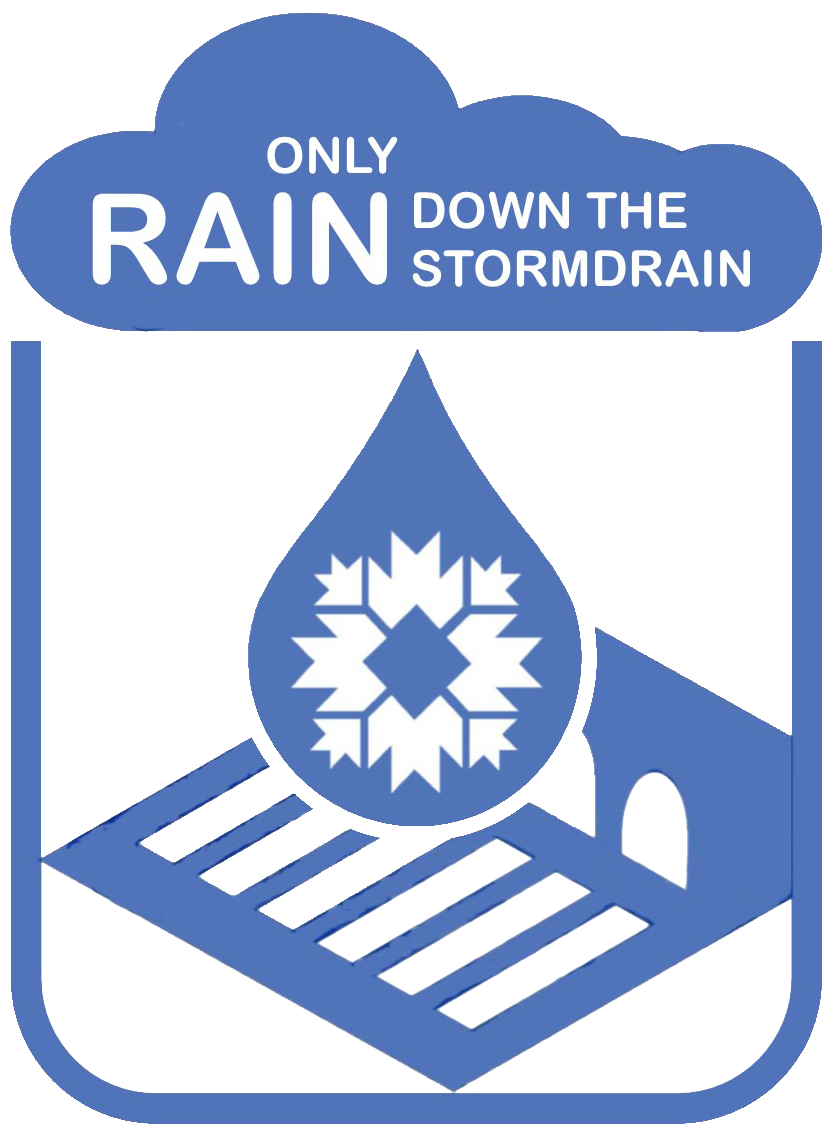
Did you know that over 11,000 storm drains (stormwater inlets) and approximately 99 miles of pipes and streams make up Bloomington's stormwater system?
A video tour of Bloomington's stormwater system thanks to WTIU Friday Zone.
How it works - Rainwater runs over the ground, enters storm drains, flows through pipes, and into streams. Note: The water is not filtered along the way; therefore, only rain should enter storm drains.
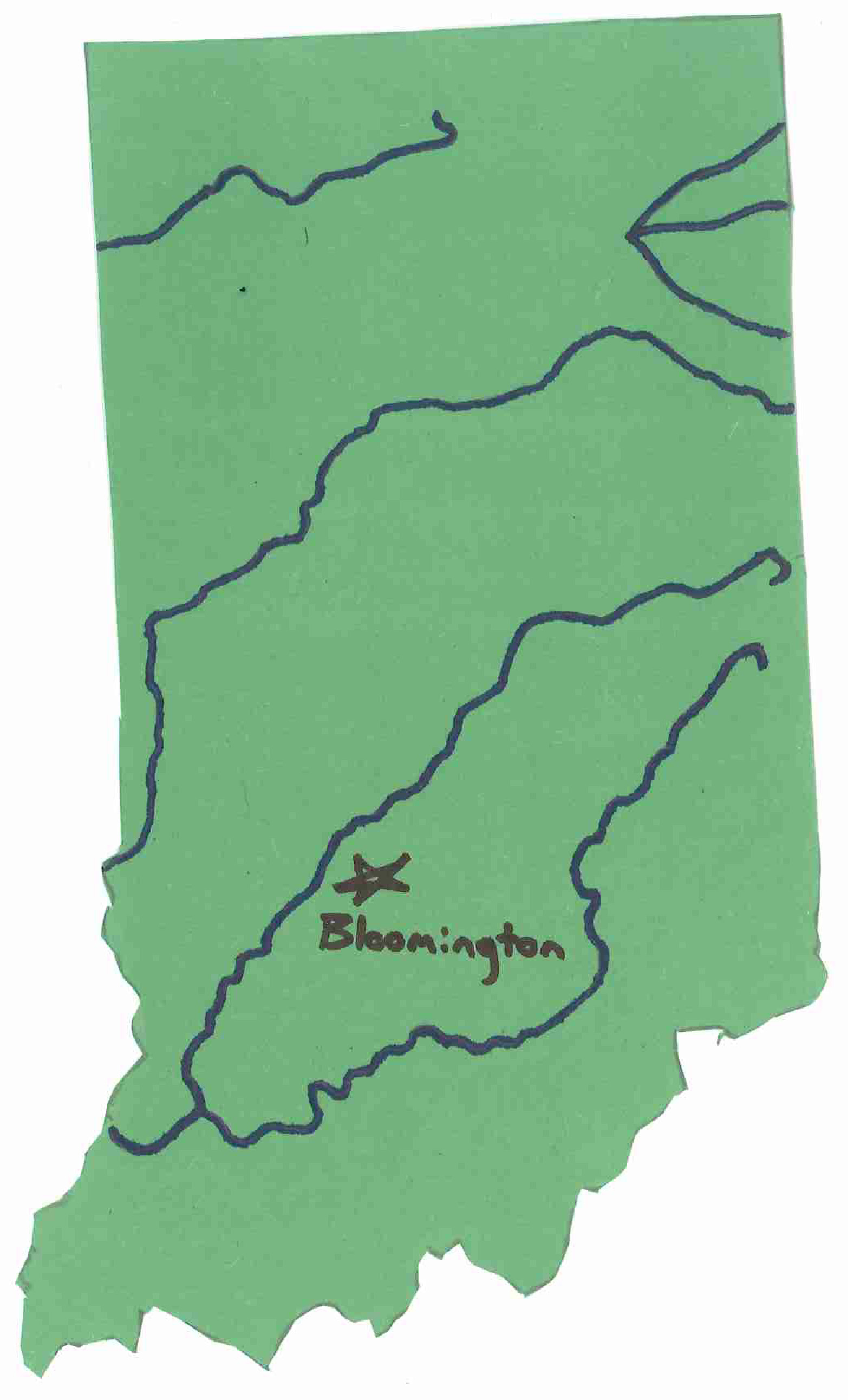
Thanks to MCCSC's Academy of Science and Entrepreneurship for creating the stop-motion video, "Free the Raindrop". The clever video follows the theoretical adventures of a raindrop as it lands in the Monroe Reservoir watershed (where Bloomington and much of the surrounding area receive their drinking water), through the CBU intake and nearby treatment plant, into town, through the infrastructure, puts out a fire, goes down a storm drain, exits in a stream, and makes its way to the Gulf of Mexico where it rejoins the water cycle. Note: The video has received the following awards: Academy of Science and Entrepreneurship School-wide Project, Best Campaign; City of Bloomington Environmental Commission, Eco-Heroes 2019, 1st Place, 9th - 12th Grade; and Indiana MS4 Partnership, Annual Meeting 2019, MS4 Stormwater Partnership Outreach Event.
---
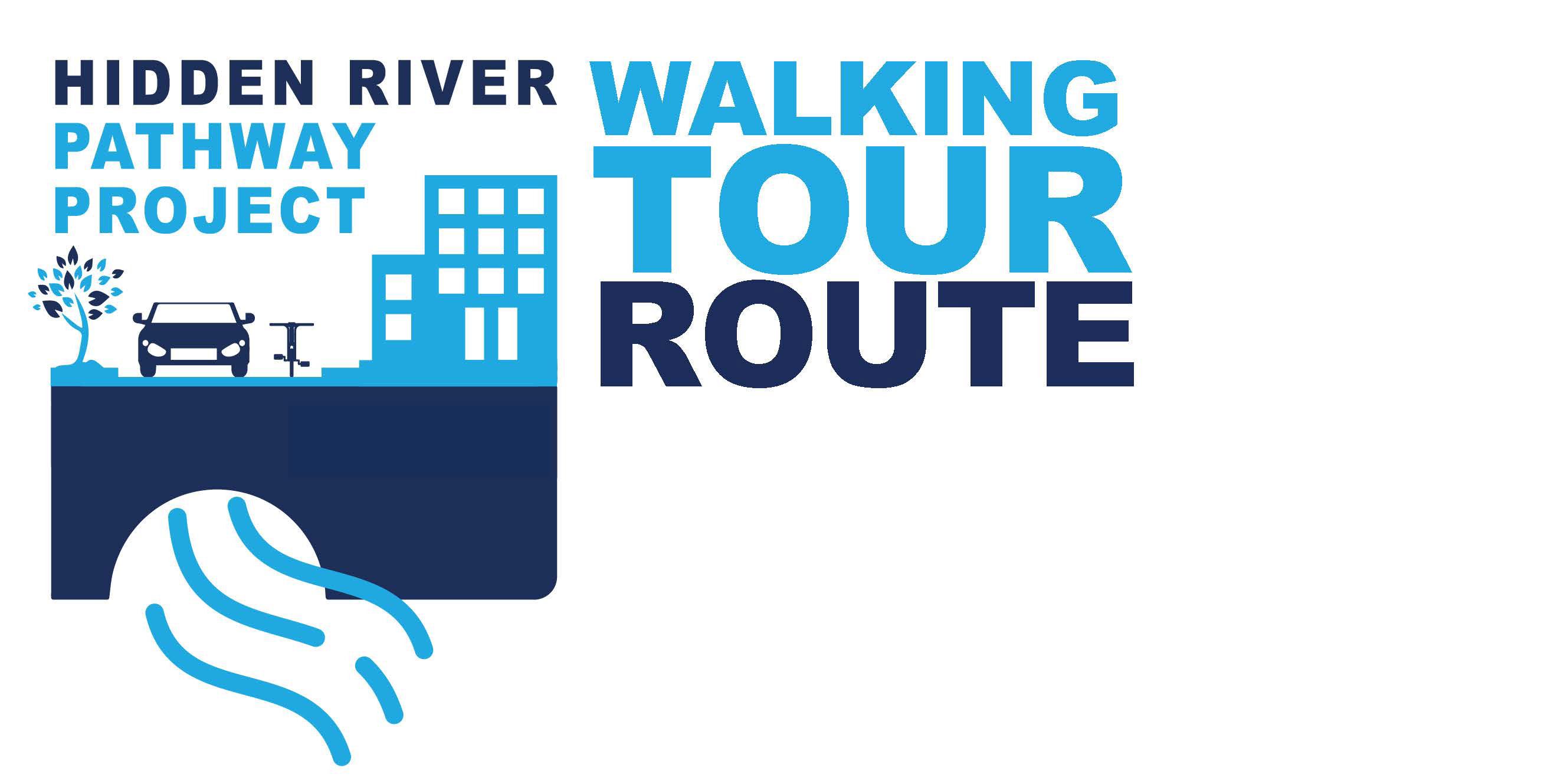
Hidden River Pathway Project Walking Tour Map - Page 1
Hidden River Pathway Project Walking Tour Map - Page 2
---
For a map of recently inspected outfalls, visit CBU's Outfall Inspection Map.
Help us to keep our water clean; if you happen to see or smell anything that is not rainwater entering our stormwater system, please report the incursion to the City of Bloomington's uReport page.
For more information, please refer to the contact information listed at the top of this page.
2. Watersheds
Watch this "one-minute" video to learn more about Bloomington's watersheds!
Bloomington is divided into two main watersheds, or areas of land that drain to larger and larger bodies of water as they pick up more runoff.
To the north is the Lower White watershed, which flows to the northwest and joins the West Fork of the White River. To the south is the Lower East Fork White watershed, which flows southwest and joins the East Fork of the White River. The dividing line, shown in dark blue on the map, below, occurs more-or-less along 10th Street. For perspective, Indiana University buildings are shown in red.

Flow
The two rivers converge further to the southwest, near Petersburg, forming the White River. From there, the White River flows to the Wabash River, joins the Ohio River (which forms the squiggly line at the bottom of our state), then Mississippi River. The Mississippi continues to the Gulf of Mexico.
The following describes the route water takes from the City of Bloomington to the Gulf of Mexico.
Lower White Watershed (flows northwest)
Cascades Creek, Griffy Creek, Beanblossom Creek, (West Fork) White River, White River, Wabash River, Ohio River, Mississippi River, Gulf of Mexico
Lower East Fork White Watershed (flows southwest)
From the east side: Jackson Creek, Clear Creek, Salt Creek (below Monroe Reservoir), East Fork White River, White River, Wabash River, Ohio River, Mississippi River, Gulf of Mexico
From the west side: Jordan River, Clear Creek, Salt Creek (below Monroe Reservoir), East Fork White River, White River, Wabash River, Ohio River, Mississippi River
For an interactive map of streams and rivers, visit the United States Geological Survey (USGS) website.
Dead (Hypoxic) Zone - Just think about it - what we do here affects not only us, but those in the Gulf of Mexico and places inbetween! As you may have heard, there is a large dead zone in the Gulf of Mexico that is about the size of New Jersey. Dead zones are areas where the oxygen concentration is so low that animals can suffocate and die. They occur where runoff from urban and rural lands contain an overabundance of nutrients from fertilizers, wastewater treatment plants, and other sources. If we limit the pollutants that enter our waterways, we can help water quality.
Karst - According to the Indiana Karst Conservancy, “Karst is a term that was first applied to a plateau in the Dinaric Alps of Yugoslavia. It has now come to be applied to similar regions throughout the world. Such regions are characterized by the presence of limestone or other soluble rocks, where drainage has been largely diverted into subsurface routes. The topography of such areas is dominated by sinkholes, sinking streams, large springs, and caves.” Bloomington and the surrounding area contain karst.
For more information, please refer to the contact information listed at the top of this page.
3. Municipal Separate Storm Sewer System (MS4)
"I recognize the right and duty of this generation to develop and use the natural resources of our land but I do not recognize the right to waste them, or to rob by wasteful use, the generations that come after us." ~Theodore Roosevelt
Why should we be concerned? An excess of pollutants can lead to poor water quality, reducing oxygen, and affecting the quality of life of a stream (remember the dead/hypoxic zone mentioned above?). This decline could create a chain reaction of problems, including adversely affecting drinking water quality, wildlife, and more.
Do you recall hearing about the Cuyahuga River in Ohio catching on fire... several times, actually? Too many pollutants, in this case those that were flammable, entered the water. The fires were a catalyst to do something about our water quality. Laws were created to help.
The following is a brief history of legislation intended to help counteract an excess of pollutants in our waters:
- 1948 - Federal Water Pollution Control Act is put into place
- 1970 - US Environmental Protection Agency becomes an agency
- 1972 - Clean Water Act (CWA) becomes a law. A portion of the CWA contains language regarding National Pollution Discharge Elimination Systems (NPDES). The Clean Water Act prohibits the discharge of pollutants through a point source* into a water of the United States unless they have and comply with the appropriate NPDES permit. Populations of 10,000 are governed by the Municipal Separate Storm Sewer System (MS4) permit. Approximately 83% of Americans live in an area regulated by MS4 permits. According to the Indiana Department of Environmental Management, "MS4s are defined as a conveyance or system of conveyances owned by a state, city, town, or other public entity that discharges to waters of the United States and is designed or used for collecting or conveying storm water. Regulated conveyance systems include roads with drains, municipal streets, catch basins, curbs, gutters, storm drains, piping, channels, ditches, tunnels and conduits. It does not include combined sewer overflows and publicly owned treatment works." As you may recall from the section above, Bloomington is home to approximately 99 miles of stormwater conveyance.
* Pollutants are classified into two main categories: Point Source and Non-Point Source. Point Source: You can see, actually point to, where the pollutant is coming from ("end of pipe"). For example, a factory that has discharged a chemical into the water. Non-point Source: You may not be able to know exactly where the pollutant is coming from (runoff from the landscape). For example, an excess of fertilizer that has made its way through the storm drains of a subdivision and discharged into a stream (it could be from any one or a number of the homes).
Part of the MS4 regulations require them to adhere to six Minimum Control Measures (MCMs), paraphrased below:
1. Public Education and Outreach - providing education and outreach to the public
2. Public Participation and Involvement - providing opportunities for the public to get involved with and participation in stormwater activities
3. Illicit Discharge Detection and Elimination - finding and eliminating sources of pollution
4. Construction Site Runoff Control - proactively taking care of pollution sources on a construction site
5. Post-Construction Storm Water Runoff Control - permanent stormwater treatment facilities required for development and redevelopment disturbing one acre or more
6. Municipal Operations Pollution Prevention and Good Housekeeping - how the municipality takes care of its own "good housekeeping" regarding pollutants
Putting it all together... Watch this video from the Indiana Association for Floodplain and Stormwater Management
At this point, you may be wondering, "How can I help?". The next sections offer opportunities to get involved with making a difference in Bloomington's stormwater quality.
For more information, please refer to the contact information listed at the top of this page.
4. Public Education and Outreach/Participation and Involvement
Why is it important to know about and get involved with stormwater quality? Watch this video from the Indiana Association of Floodplain and Stormwater Management
Take the "Clean Stormwater Pledge"!
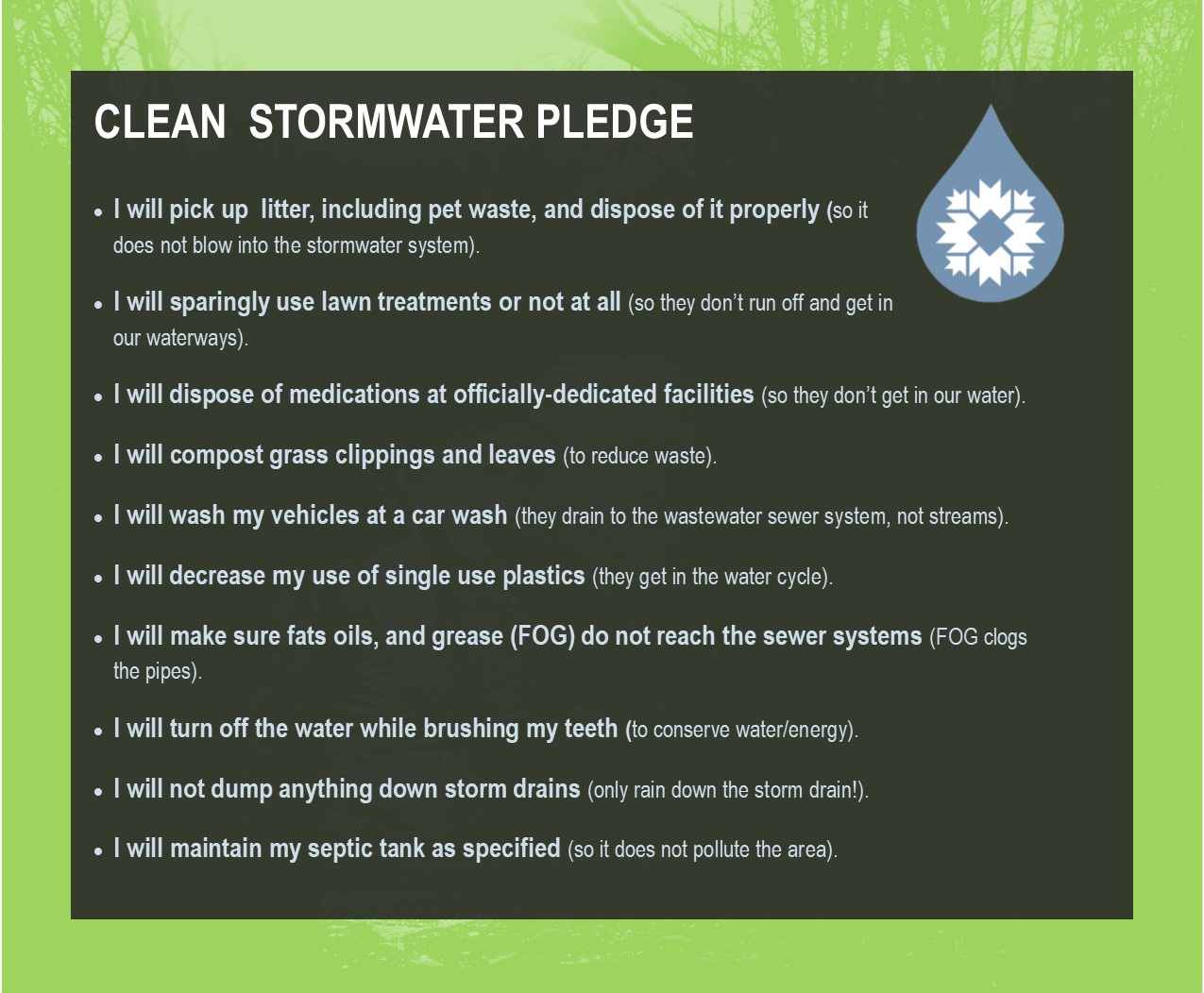
The City of Bloomington Utilities offers a number of education and outreach/participation and involvement opportunities, including:
Weekly Facebook Posts - Like and follow us on Facebook for weekly stormwater posts including timely tips!

Adopt-a-Drain (This section has grown and now has its own page!) - Remember, only rain should go down a storm drain! Help us keep pollutants, such as grass clippings and plastics, from clogging storm drain inlets. It's a great way to get out and help with water quality and quantity issues in your neighborhood. Do you have a storm drain in front of or near your home? Please visit our Adopt-a-Drain page to sign-up!
Storm Drain Marking - Help us keep our waterways clean by reminding people not to dump anything in storm drains by placing storm drain markers ("stickers") on storm drains. This program is available for service groups. All materials are supplied.
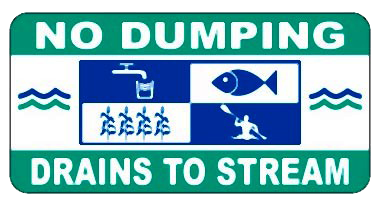

Do you like the storm drain marker and would you or a young person like to color it? Print this coloring page!
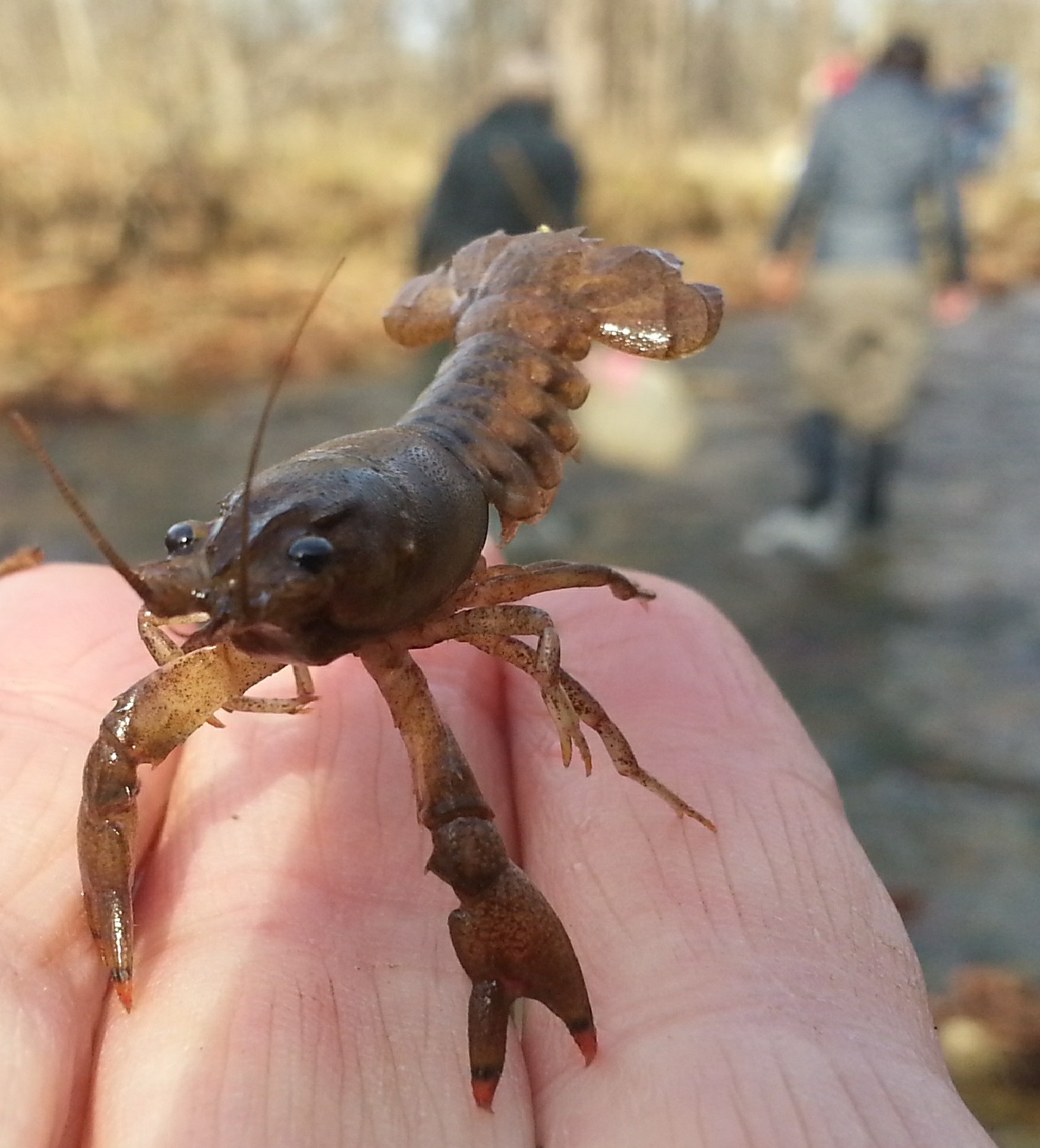
Hoosier Riverwatch - A water quality monitoring program administered by the Indiana Department of Environmental Management. Local facilitators are available to teach workshops focusing on physical, chemical, and biological monitoring. It is interesting to discover that certain little creatures that live in the water can give you an indication of the water's quality.
Stormwater Art - Art can be an ideal way to communicate a message, such as helping to maintain good water quality. There are many opportunities to be creative and help our community. For example, using approved stencils to share a stormwater message.
Presentations/Activities - We are available to speak to your classroom, service organization, and more! A number of presentations/activities are available. For example - water cycle, watersheds, water quality, caves and karst, water quality monitoring, green infrastructure, and more. We also offer tours of water treatment plants and related volunteer opportunities. In addition, you can mix and match them depending upon your curriculum and/or interests.
Adopt-a-Stream - This program is a collaboration with Bloomington Parks and Recreation and Monroe County Parks and Recreation. Waterways, including streams and ditches, are available for "adoption". Do you have one in mind? Please note that any of the programs listed on this page can easily be incorporated into the endeavor.
Do you have an idea? - We are also available to work with you on a custom-made program.
For more information, please refer to the contact information listed at the bottom of this page.
5. Reporting something that shouldn't be going into a storm drain
Reporting a stormwater concern - uReport: Remember, only rainwater should enter storm drains. Technically, everything else is considered a form of pollutant, or "illicit discharge" (see below). Some examples are dumping motor oil, grease, or other grass clippings into a storm drain. If you see someone actively engaging in activities that could adversely affect water quality, please fill out a City of Bloomington uReport page. The person(s) committing the offense may receive a Notice of Violation or possibly even a fine.
A link to our Illicit Stormwater Connection and Discharge ordinance.
Pools and Spas - The water draining from pools and spas can be considered harmful. Follow precautions in the attached Pools and Spas brochure (see Attachments section, below), to make sure you are draining the feature responsibly and avoid an illicit discharge violation.

Got Aquarium? - It can be very harmful to our local environment to empty out aquariums into natural or man-made waterways. For information on aquarium disposal, including their contents, please contact:
City of Bloomington Animal Shelter
3410 S. Walnut St.
Bloomington, IN 47403
(812) 349-3492
www.bloomington.in.gov/animalshelter
Refueling Vehicles Tips - Watch this video from the Indiana Association for Floodplain and Stormwater Management
Leaf Collection Information - Visit the Street Department's website Note: Alternatively we encourage you to compost your leaves (and grass clippings); information on composting can be found on the Environmental Protection Agency's website.
Medication Disposal and Location Information
National Association of Boards of Pharmacy Information
Indiana University Health Information
The District - Monroe County Solid Waste Management District Information
For more information, please refer to the contact information listed at the top of this page.
6. Construction Site Runoff Control/Post-Construction Site Runoff Control

Sediment is the number one pollutant by volume in the State of Indiana. Stormwater can run off of construction sites when it rains, carrying sediment and causing erosion. Measures can be taken to control erosion.
A Grading Permit May be Needed for Construction Projects - Grading permits are necessary for certain construction projects. Construction sites disturbing one acre or more of land are required to have a CSGP. Construction sites disturbing 2,500 square feet or more of land are required to have a Grading Permit. For more information, see the attached Rule 5 brochure.
Links to related ordinances
- Construction Site and Post Construction Stormwater Control ordinance
- Development Standards for Siltation and Erosion Prevention ordinance
Concrete Washouts and Maintenance - Watch this video from the Indiana Association for Floodplain and Stormwater Management
Pond Maintenance Tips - Watch this video from the Indiana Association for Floodplain and Stormwater Management
For more information, please refer to the contact information listed at the top of this page.
---
Back to the Stormwater home page
To report a stormwater concern, use the uReport website (Video: How to fill out a stormwater-related uReport - 0m:47s)
For more information on stormwater, in general, please visit our Stormwater Education page
For information on adopting a storm drain, please visit our Adopt-a-Drain page
For more information on homeowner resources, please visit our Homeowner Resources page
